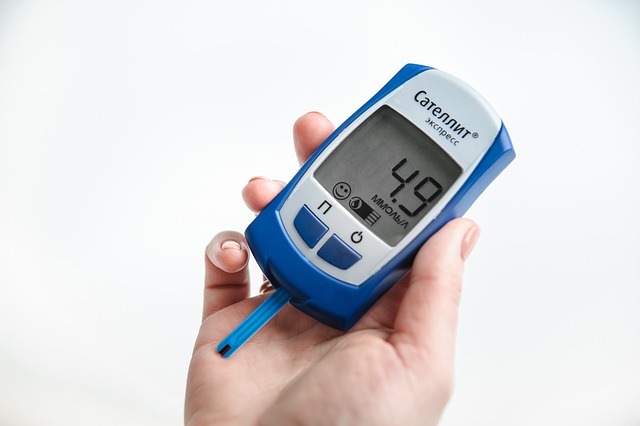If you have prediabetes, you'll want to be careful about your food choices and make sure that what you are eating supports healthy blood sugar levels and a healthy body. But it's not always easy to know which foods are healthy and which are not.
For example, you may have received mixed messages about chocolate. Is it friend or foe? Healthy or unhealthy?
For all you chocolate lovers out there, there is good news. Chocolate can indeed be a part of a healthy prediabetes diet! And even better, it actually might have amazing benefits when it comes to preventing diabetes.
There is just one catch: you have to be careful about the type of chocolate you consume, as not all forms of chocolate are good for you.
Dark chocolate might actually help prevent diabetes
Dark chocolate is made up mostly of cocoa bean solids and cocoa butter, which come from the plant Theobroma cacao. Cocoa beans offer incredible health benefits, as they contain many different important nutrients. Cocoa beans are one of the top food sources of something called polyphenols (a specific type of antioxidant), for example.[1] These polyphenols give dark chocolate various health benefits.
One of those benefits is supporting healthy blood sugar regulation. The compounds in cocoa beans and dark chocolate can help in many different ways, including slowing carbohydrate digestion and absorption in your gut, improving insulin sensitivity, and reducing oxidative stress.[1,2] Evidence from several studies suggests that dark chocolate intake can improve fasting plasma glucose levels and measures of insulin resistance.[3,4]
And here's the great news. People who eat dark chocolate with lots of polyphenols have a reduced risk of type 2 diabetes.[1,5,6]
Eating dark chocolate may help to improve insulin resistance, regulate blood sugars, and slow the progression of type 2 diabetes. This means that if you have prediabetes, dark chocolate might just be able to help you prevent your prediabetes from developing into full-blown diabetes.[2]
Dark chocolate can also help prevent the serious cardiovascular complications that are associated with prediabetes and insulin resistance.[2,7] And for those who have already developed diabetes, chocolate consumption in moderate amounts may also be useful to supplement treatment.[1]
Additional health benefits of dark chocolate
Beyond protecting against diabetes, dark chocolate has other useful health benefits as well. These include:
- Protecting against DNA damage due to the high antioxidant content
- Reducing appetite
- Helping you maintain a healthy weight
- Regulating the immune system
- Promoting a healthy gut microbiome
- Boosting mood
- Protecting heart health (it can positively affect blood pressure, insulin function, and blood vessel health, for example) [1,3]
But remember, you can't just expect anything that has the word "chocolate" on it to confer all of these amazing health benefits. You have to choose your chocolate products wisely if you want to support your health.
Not all chocolate is healthy – the type matters
Chocolate comes in numerous forms, and the health benefits vary a lot between those different forms.
As we've already learned, chocolate is made from cocoa beans that come from a plant called Theobroma cacao. These cocoa beans are ground up and processed, and eventually they are made into cocoa powder, chocolate bars, etc. What is added during the manufacturing and cooking process is what really makes the difference when it comes to health benefits.
In the case of dark chocolate, for example, the end product is made up of mostly cocoa bean solids and cocoa butter. It doesn't have a lot of sugar or other ingredients. This makes dark chocolate very healthy and rich in the important nutrients like polyphenols that come from cocoa beans.[1]
The problem is that the polyphenols in cocoa are quite bitter, which some people find unpleasant to taste. The darker the chocolate, the more healthy polyphenols it will have in it‚ but the more bitter it will taste.[1]
That's why most chocolate products end up highly processed, containing lower and lower amounts of actual cocoa bean and higher and higher amounts of things like sugar and milk that make them taste sweet and creamy. Unfortunately, these processing techniques eliminate the healthy polyphenols right along with the bitter flavor.
Milk chocolate, for example, can taste pretty delicious. But it contains many added ingredients like sugar and milk and the cocoa content is very low.[1] Milk chocolate is the kind of chocolate you'll most often see in grocery stores and in common sweets and snacks.
Dark chocolate is associated with several important health benefits, while milk chocolate can be associated with adverse effects because it is usually high in sugar and other unhealthy ingredients.[1] Baked goods like chocolate cake, brownies, and chocolate cookies are also unhealthy options when it comes to chocolate.
Tips for eating chocolate with prediabetes
So you have prediabetes. Can you have chocolate? Yes. Can it actually be good for you? Yes. But do you need to be choosy about which kind you consume? Also yes.
If you want to take advantage of the health benefits of chocolate, then you'll need to make healthy choices when it comes to picking out your chocolate products. Not everything that is called chocolate is actually good for you. Here are some tips to follow to make sure you are consuming only healthy, high-quality sources of chocolate:
1. Avoid candy and sweets. Anything that is labeled "chocolate" but is really just a candy or dessert needs to be avoided. We are talking Easter eggs, Valentine's chocolate, Halloween candy, cupcakes, and cookies. These almost always contain very small amounts of actual cocoa bean and are super high in sugar, carbs, and other unhealthy additives.
2. Read labels and ingredient lists. If the ingredient list is short and simple and the product doesn't contain hidden sugars, carbs, and additives, it is likely a healthier option. If the ingredient list is long and there's a lot of other junk in there other than just cocoa, stay away from it.
3. Look for chocolate bars with high cacao content. The darker the chocolate, the better. This means more polyphenols and less sugar. Chocolate bars with cacao contents upwards of 80% are much healthier than those with only 40 or 50%.
4. Use unsweetened cocoa powder in recipes. Try mixing unsweetened cocoa powder into things like smoothies, coffee, oatmeal, or other healthy foods.
5. Eat chocolate in moderation. As with most things, moderation is best when it comes to eating chocolate. If you find a dark chocolate bar you like, nibble on a few squares per day. If you must eat some milk chocolate, save it for special occasions and only consume a very small amount.
Here's the bottom line. You don't have to cut chocolate out of your life if you have prediabetes. But you do need to be careful with what kind you consume.
Want more guidance on what you should eat and what you shouldn't eat if you have prediabetes? Check out Lark's Diabetes Prevention Program to learn more.
Reviewed by Heather Tonkins, Lark Health Coach











.webp)







